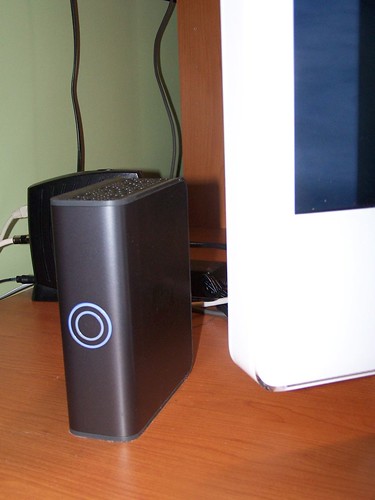A former journalist who now works in communications, Geoff Meeker has always kept in step with the forward march of technology. He first used modem connections in 1986 and his first laptop, a Tandy, had a memory of 48K. “Sometimes it’s better to wait for second generation technology,” Geoff says. “And sometimes, you might as well splurge right now. Hopefully this column will help you sort it all out.”
Of course, the column went into hiatus when the Express folded. Just recently, The Telegram called and offered to pick up the column. I agreed, and the first installment appeared yesterday, May 14, on page 3. It will now appear every other week. I have decided to run the first column here, for those who may have missed it and to provide something to read whilst I rush elsewhere to meet a client deadline.
TECHNOLOGY COLUMN, May 14:
Time to back up those important files
 Do you have hundreds of priceless digital photos stored on your computer’s hard drive?
Do you have hundreds of priceless digital photos stored on your computer’s hard drive?How about many hours of home movies, saved to your video editing program?
Maybe you work at home, and all your business files reside on your computer.
Or perhaps you’re halfway through that great Newfoundland novel… and the whole thing is stored on your hard drive.
If so, ask yourself what would happen if your computer were to crash tomorrow. Hard drive fried. Everything gone.
Yes, it’s too scary to contemplate. But it happens. I’ve seen it myself, and my eardrums are still bleeding from the anguished cries of colleagues who lost entire projects when their computers died.
If there are files of value stored on your computer, you need to back them up. And the quickest, easiest and most reliable method is to connect an external hard drive. (There are other ways, such as by burning files to CD and DVD, but this can be time consuming.)
In addition to backing up work and personal files, a key concern of mine is the amount of video that I have stored on my hard drive. And in case you weren’t aware, video is a major memory hog. For example, if I stored 19 hours of raw, uncompressed video on my 250 GB hard drive, the computer would be full.
I do have my important video backed up on DVD. But I prefer ready access to the video archive, and the external drive allows me to call up any file I want, simply by clicking the external drive icon on my desktop. It has capacity for 38 hours of video and, if I fill it up, that’s fine – I will simply buy another external drive, and start filling that up as well.
As noted, there is no end to the variety of external hard drives that are available on the market. You can pick one up at any computer supply store as well as purchase them online.
I purchased a new external drive (shown above) this week for $179 at Costco, but you can find them all over the place – including online – in roughly this price range. My drive is a Western Digital My Book, with a 500 GB capacity (twice the memory of the 250 GB on my iMac).
A quick Internet search at Futureshop turned up the Comstar 500 GB external drive, on sale for $199, while CDW had the Seagate 400 GB model for $204. There are a range of other models available at both sites with anywhere from 60 to 120 GB capacity, priced in the $100 range, which is not such a great buy at all. So look closely at capacity before buying.
Two other points worth considering are connections and ease of use. The most common cable connections between the computer and external drive are USB and firewire, and some offer both. I recommend the firewire connection; it’s much faster when copying those large video files.
Finally, ask about operating software, and how easy or difficult it is to configure the connection between the hard and external drives.
The My Book that I purchased was super easy to set up and run (even on a PC). That’s because the operating software is already installed on the drive. You connect it to your computer, then plug it in. The external drive does the rest, finding your hard drive and loading the software for you. Then you click the icon that appears on your desktop and the software opens like a flower, giving you a series of prompts, to which you generally click ‘ok’ each time.
Then it’s a matter of performing your first backup. The program lets you choose between a full data backup and an incremental backup. The manufacturer strongly recommends that you run the full data backup on the first day. After that, you can run incremental backups – ideally on a regular basis – which only saves those files which have been added or changed since the last backup. But be warned: the first full backup will take quite some time to complete, depending on how much data you have on your hard drive.
After that, you can set the external drive software to run automatic incremental backups as often as you like.
And then you can relax, secure in the knowledge that those precious files are now fully protected.






No comments:
Post a Comment